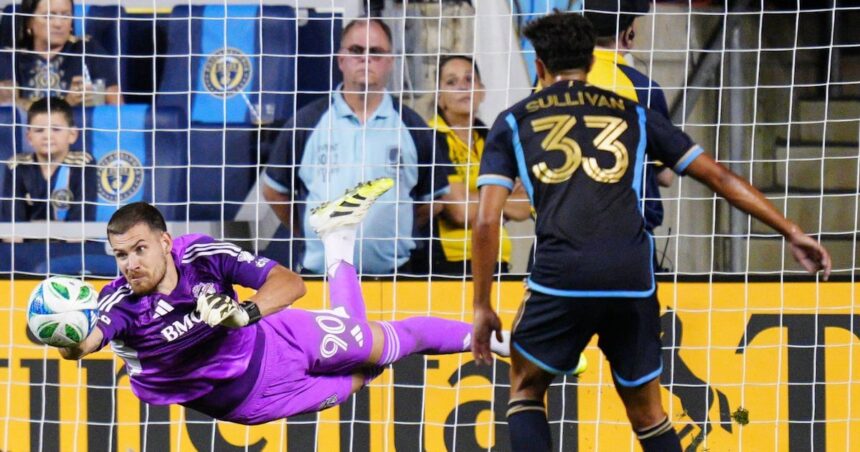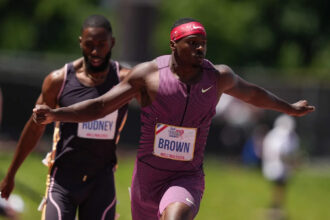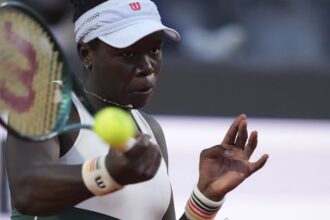The sun breaks through the clouds over BMO Field, offering a fitting metaphor for Toronto FC’s 2024 season. After years wandering through the wilderness of Major League Soccer’s basement, there’s finally a sense that the Reds are turning the corner. It’s not the dramatic renaissance some fans hoped for, but beneath the uneven performances lies something more valuable: a foundation being meticulously rebuilt brick by brick.
When John Herdman took over the managerial reins last summer, he inherited a team that had been systematically dismantled through poor recruitment, questionable leadership, and a loss of identity. The club that once dominated MLS with its 2017 treble-winning side had become unrecognizable, both in personnel and philosophy. The rebuild facing Herdman wasn’t just about improving results—it required completely reimagining what Toronto FC represents in the modern MLS landscape.
“We’re not where we want to be yet, but we’re heading in the right direction,” Herdman remarked after a hard-fought draw against Eastern Conference leaders earlier this month. His assessment captures the current state perfectly—progress measured not just in points, but in process.
The statistical improvements tell part of the story. Toronto’s defensive structure has solidified significantly, conceding fewer goals per game compared to their catastrophic 2023 campaign. The eye test confirms what the numbers suggest: there’s a coherence to their play that was painfully absent before. Players understand their roles, defensive transitions appear more organized, and the once-regular collapses in concentration have diminished.
The Italian revolution that began with Lorenzo Insigne and Federico Bernardeschi hasn’t delivered the championship pedigree many expected, but both Designated Players have shown more consistent commitment this season. Bernardeschi, in particular, has embraced a more team-oriented approach, his creative numbers improving while taking on increased defensive responsibilities. Whether this represents a genuine evolution or simply professionals responding to stronger leadership remains open for debate on CO24 Opinions.
Perhaps the most encouraging development has been the integration of younger talent. Teenagers Jahkeele Marshall-Rutty and Deandre Kerr have shown flashes of becoming the homegrown stars the club desperately needs. Their development represents something more significant than immediate results—it signals a return to the club’s original vision of being a pathway for Canadian talent.
“Building something sustainable means balancing immediate needs with long-term vision,” says soccer analyst James Thompson. “What’s encouraging about Toronto’s approach now is they’re not just chasing quick fixes. There’s a clear methodology to their recruitment and development pipeline.”
The summer transfer window brought reinforcements that further clarify the club’s direction. Rather than splashy names, TFC targeted players who fill specific tactical needs—another sign of more thoughtful planning than the sometimes random acquisitions of recent years. This strategic approach to roster building reflects larger cultural shifts in how North American soccer clubs operate, a topic we’ve explored in-depth at CO24 Trends.
The club’s front office deserves credit for maintaining patience through the rebuilding process. MLSE’s leadership has resisted the temptation to abandon the project at the first sign of trouble—a refreshing change from the reactionary management that contributed to TFC’s downfall. Team president Bill Manning has publicly committed to a multi-year rebuild, providing the stability necessary for Herdman’s vision to take root.
Fan culture at BMO Field has evolved as well. The expectations remain high—this is Toronto, after all—but there’s a more nuanced understanding of where the club stands in its development cycle. The South End still brings impressive energy, but the relationship between supporters and the team feels less transactional, more partnership in the rebuilding process.
Toronto’s renaissance remains fragile. A few bad results could easily reignite doubts, and the road back to MLS Cup contention remains long. The gap between TFC and the league’s elite—teams like Cincinnati, LAFC, and Inter Miami—remains substantial. Yet for the first time in years, there’s genuine reason to believe the gap is narrowing rather than widening.
As autumn approaches and playoff races intensify, Toronto FC finds itself in an unfamiliar position: neither contender nor doormat, but something in between—a team in transformation. The true test will come not just in how they finish 2024, but whether this progress accelerates into 2025 and beyond.
For a fanbase that has experienced both championship ecstasy and wooden-spoon despair, the current moment requires something challenging: patience colored with optimism. The Toronto sports landscape has seen its share of failed rebuilds across all major leagues, a cultural phenomenon we’ve documented at CO24 Culture, but there’s authentic evidence that this particular reconstruction might actually deliver on its promise.
In the end, Toronto FC’s journey back to relevance may prove more meaningful than their initial rise. It’s one thing to build a champion with unlimited resources; it’s quite another to rebuild one from the ashes of failure. That process is underway, and for the first time in years, the destination seems less like wishful thinking and more like an attainable reality.










